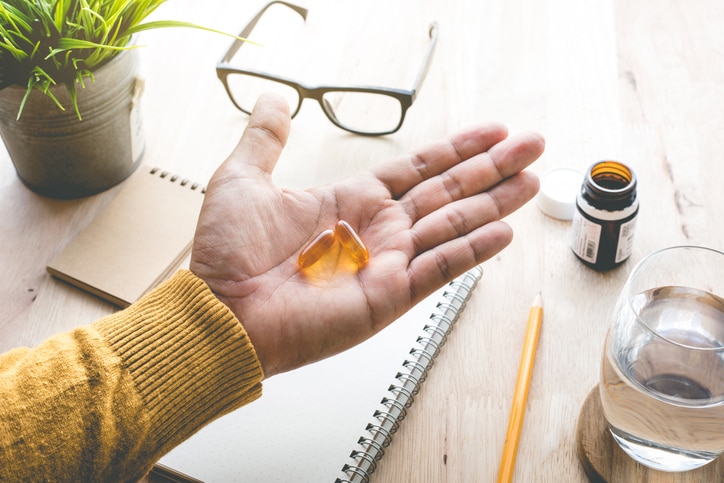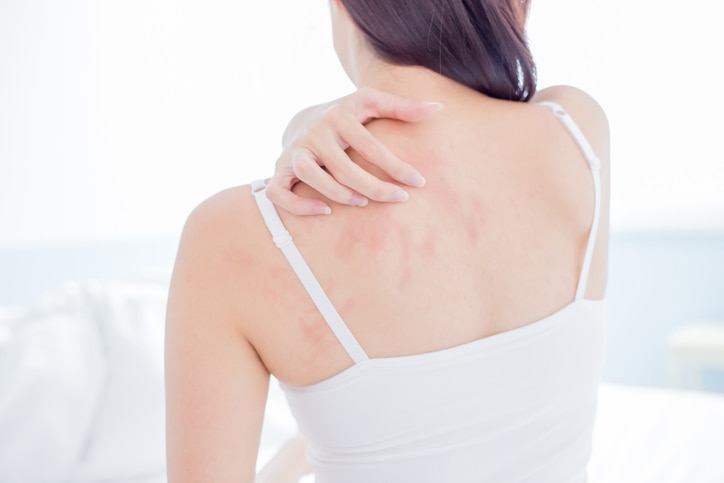Causes of back acne
Acne is an inflammatory skin condition characterized by red pimples on the skin when pores are clogged with dirt and dead skin cells.

Common causes of back acne could be:
- Genetics
- Hormones
- Sweat
- Stress

Preventions for back acne
(1) Eat a healthy and balanced diet
You are what you eat! An unhealthy and imbalanced diet may trigger acne. You should avoid eating oily junk food or too much high-glycemic index (GI) foods, which increases your blood sugar level shortly and make acne worse. Eat more fresh vegetables and fruits are good for reducing acne.
(2) Use the body wash containing benzoyl peroxide
Don’t let the sweat and dirt leave on your skin for a long time. They can be the contributors to back acne. Take a shower/bath immediately after a workout. Using the body wash containing benzoyl peroxide can kill the bacteria on your body that may lead to breakouts. Wear loose-fitting clothes can also let your skin breathe and avoid rubbing the sweat and dirt into the pores.
(3) Exfoliate your body regularly
You can use a gentle body scrub with salicylic acid to exfoliate your skin regularly. It can draw out the dirt from the pores, remove excess oil and dead skin cells. This can prevent clogged pores and acne effectively.
(4) Wear loose-fitting clothing
Tight-fitting clothes increase fraction, heat and pressure on the skin, as well as harbour sweat, oil and dirt. This would further irritate the skin and provoke a breakout. Wearing loose-fitting clothes can prevent such situation by releasing sweat quickly and letting your skin breath.
(5) Keep hair off your back
Long hair could be loaded with oils, dirt and hair products. Keep your hair off your back by pulling it up into a ponytail to prevent additional dirt and oil from clogging your pores. Wash your hair regularly to keep it clean.

Home remedies for back acne
(1) Tea tree oil
Tea tree oil contains natural antibacterial properties that can kill bacteria and treat back acne effectively. You can apply the tea tree oil to your skin by using cotton balls after a bath or shower. Tea tree oil can penetrate clogged pores and dry up oily spots. It also helps to reduce skin irritation and calm the redness.
(2) Aloe vera
Aloe vera extract can kill many strains of bacteria and fungi, making it great in treating acne with its antibacterial and anti-inflammatory properties. Applying aloe vera gel on your skin can help relieve the swollen breakout by lessening the swelling and redness.
It can also be applied to the skin may help to reduce acne scar formation. Simply apply the aloe vera gel to the scars and massage the skin. Leaves it for 20 minutes then rinse it off. Aloe vera can help to lighten your acne scars.
(3) Omega-3
Omega 3 fatty acids benefit the skin by regulating sebum production, maintaining adequate hydration, preventing acne and reducing inflammation.
Our body cannot produce omega-3 fatty acids directly. So, we must absorb omega-3 fatty acids from the diet. There are 3 main types of omega-3 fatty acids. They are ALA (alpha-linolenic acid), DHA (docosahexaenoic acid) and EPA (eicosapentaenoic acid). Foods rich in omega-3 fatty acids include salmon, walnuts, trout, sardines. You can also consume fish oils or omega3 supplements to increase your intake.
(4) Reduce the consumption of dairy
There is a potential link between dairy and acne with research supporting that consuming dairy products may increase the risk of acne in people aged 7–30 years. The theory is that, one’s hormonal and inflammatory factors is influenced after the consumption of dairy products, and both are linked to acne. Therefore, cutting your intake of dairy products may reduce the triggers that provoke breakout.











